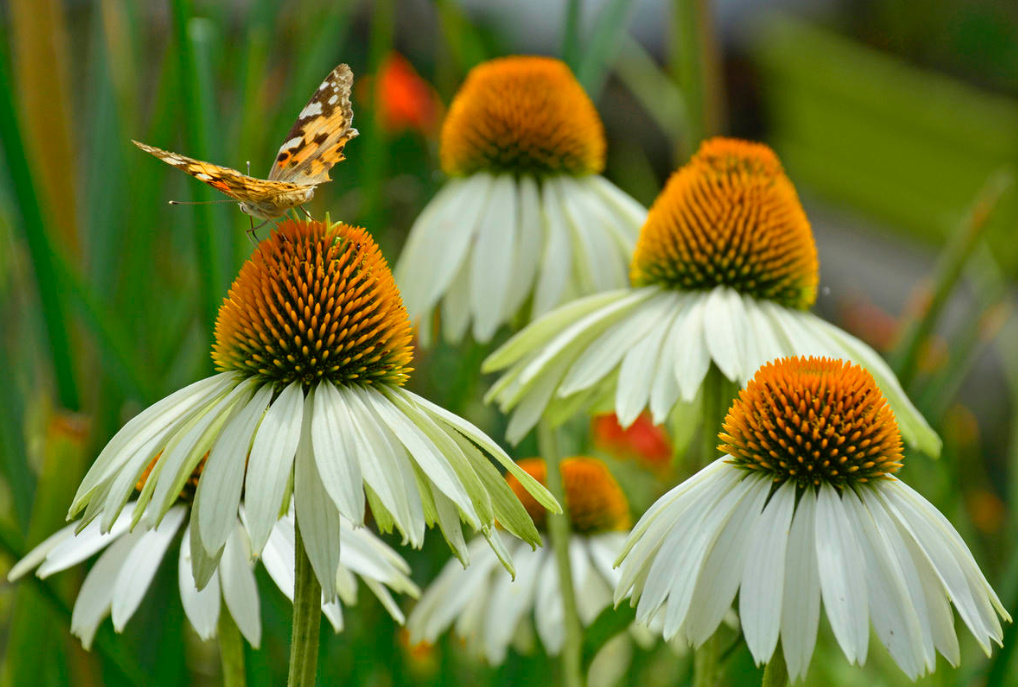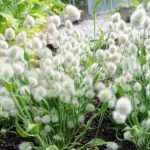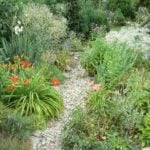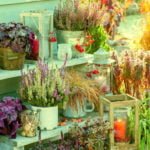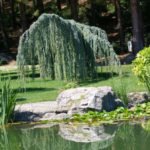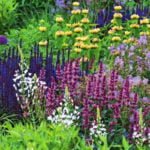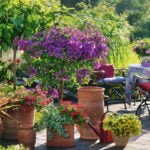Daisies are one of the cutest flowers. They are always associated with youth, purity, chastity and attract attention in the garden, even if they turn out to be … not daisies at all! After all, there is only one true chamomile, Matricaria. We will tell you about plants whose inflorescences only resemble their favorite flowers from childhood.
1. Leucanthemum
When it comes to daisies, most people imagine just Leucanthemum — with long bright white petals and a juicy yellow center. Leucanthemum vulgare — it is this “chamomile” that can often be found in fields and meadows. This perennial herbaceous plant could not fail to notice the breeders. They have bred many beautiful species and varieties, many of which amaze with large baskets and double inflorescences. To see the “daisies” in your garden at the end of May, choose cultural varieties bred on the basis of Leucanthemum vulgare. From mid-July, those whose ancestors were Leucanthemum maximum bloom.
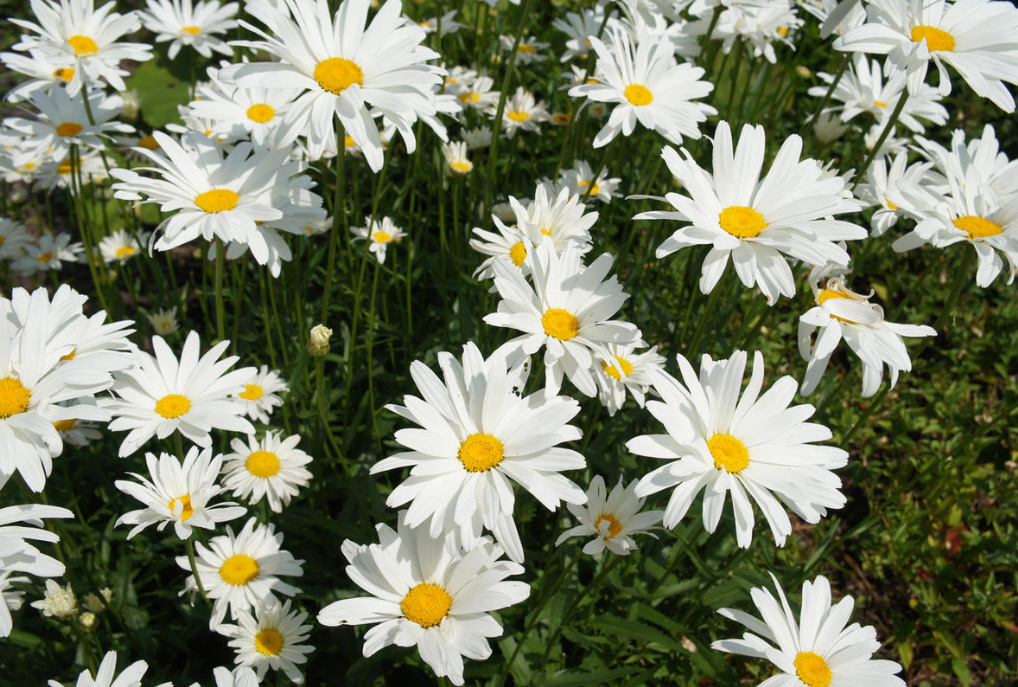
2. Bellis
Cute, gentle Bellis perennis are very similar to daisies, only small — of course, if we consider their simple varieties. But it is they who turn out to be the most stable, they sow independently and grow, blooming in May-June. Sometimes they delight with repeated flowering in autumn. Varietal Bellis can resemble lush colored pompoms. The plant is grown in a biennial culture, placed in the foregrounds of flower beds, curbs are formed from them. Bellis are perfectly combined with other spring flowers.
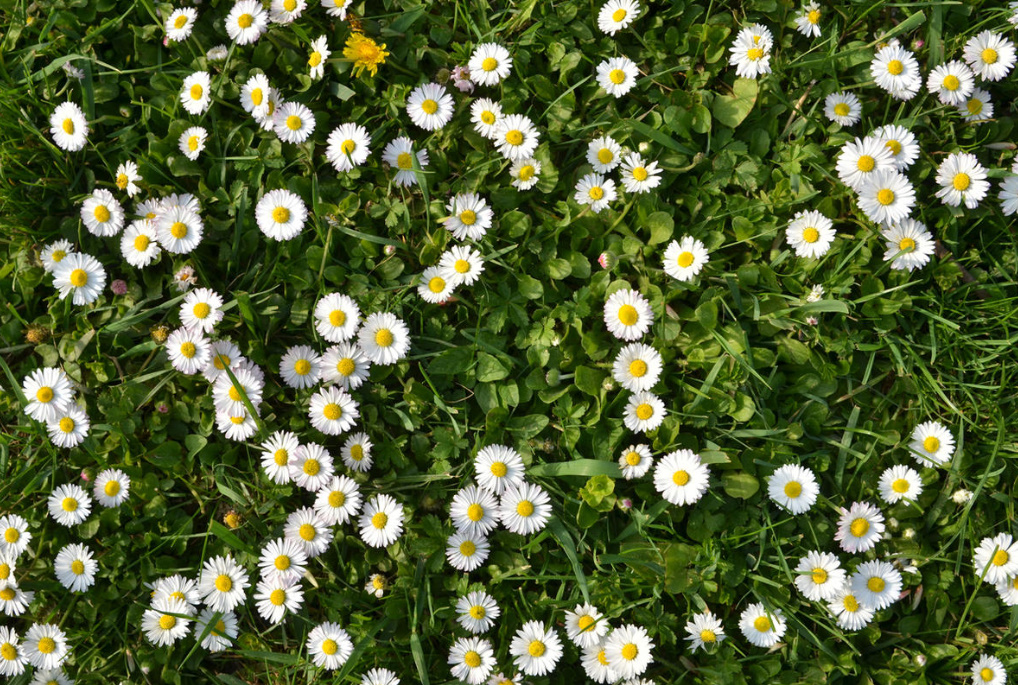
3. Echinacea
Previously it belonged to the genus Heliantheae — with the same name — but now it is separated into a separate genus Echinacea. Many have heard about the medicinal properties of echinacea, but it is no less popular in gardens. Basket flowers often have rich pink or purple tongue flowers (petals) and a pronounced middle of dark tubular flowers. However, many interesting varieties have been bred, some of them resemble chamomile in color. The plant is perennial, blooms in the second year of life. It produces a lot of flowers on long peduncles, so it attracts everyone’s attention during the flowering period.
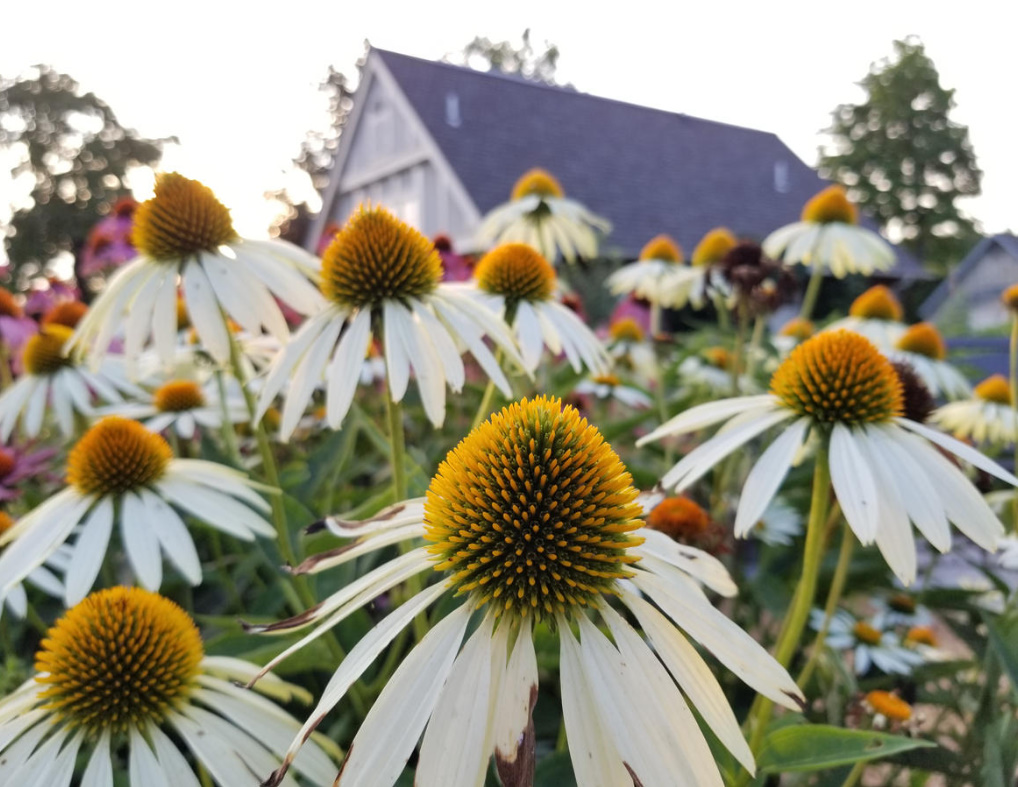
4. Brachyscome
This cute “daisy” is not very popular, but in vain. There are many species of Brachyscome, but Brachyscome iberidifolia is usually grown in culture. It is absolutely not demanding on the composition of the soil and watering, while it blooms profusely from July to September, by this time turning into a lush openwork bush. Its height is 25-30 cm, the number of flowers on each reaches hundreds. The only drawback is that the plant does not tolerate cold and therefore is usually grown by seedling or sowing in the ground in mid-late April. Your favorite bushes can be transplanted into pots in the fall and taken to a cool room for the winter. With the onset of spring, you will be able to get cuttings from a preserved plant and, having rooted them, propagate Brachyscome.
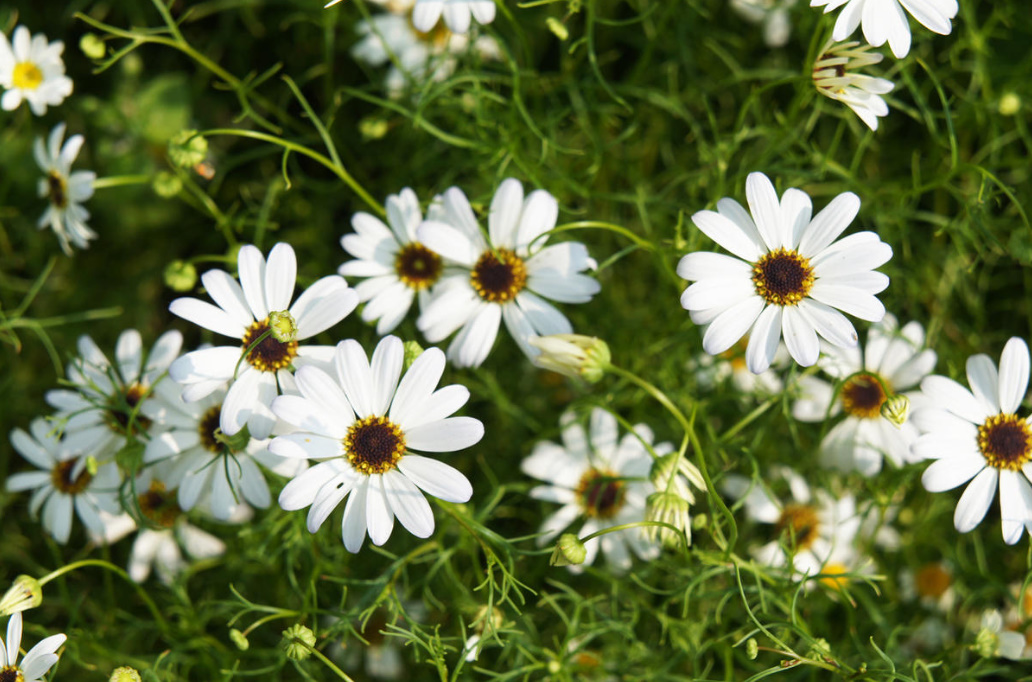
5. Gazania
A large, bright, incredibly spectacular daisy—shaped flower is Gazania. Its inflorescences reach a diameter of 10 cm, the petals can be of all shades of yellow (from lemon to orange), as well as crimson, pink and red shades. But we are interested in varieties with white coloring, since they are exactly like daisies, for example ‘New Day White F1’, ‘Kiss Frosty White F1’. A distinctive feature of the plant is that on the petals you will see darker or even contrasting strokes to the main color at the base or along the central axis, which makes the appearance of the flower memorable and unusual. The height of the bush is from 15 to 30 cm . As a rule, it is grown as an annual plant, but it can, like Brachyscome, be taken to a room with a temperature of at least + 10 ° C for the winter, and propagated by cuttings in the spring.
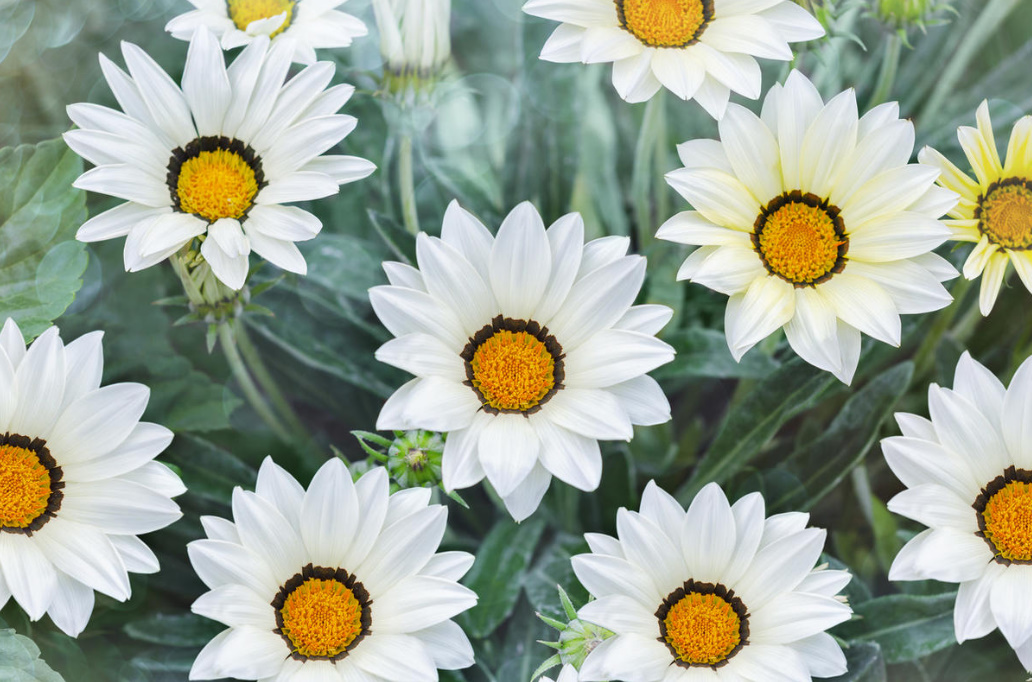
6. Erigeron
Erigeron flowers can also “earn extra money with daisies” in your garden. Yes, its varieties with cold shades of purple and lilac are the most popular, but white petals with a yellow center are also in the assortment. The plant is perennial, combines unpretentiousness and high decorative effect. Blooms luxuriantly in June-August, as the bush forms many shoots, each of which ends in a bud. The ‘Schneewittchen’ variety is very beautiful — with thin snow-white petals and sunny middles.
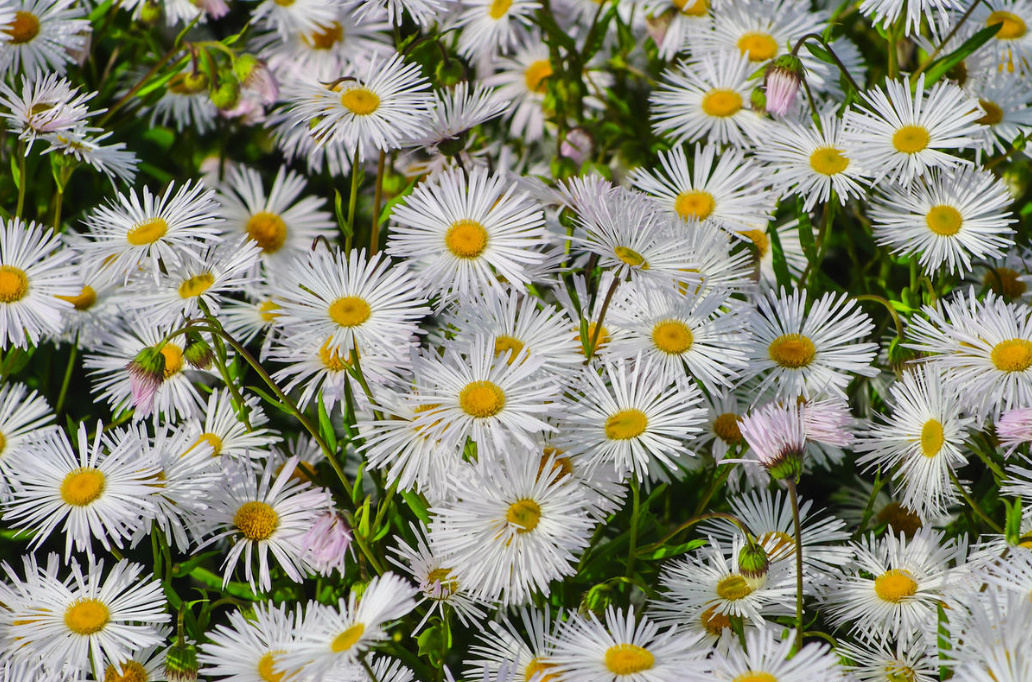
7. Cosmos
Many have a weakness for Cosmos — light and elegant, unpretentious, self-sowing and also independently growing to an impressive size. In a sunny flower garden, the plant will give a large number of flowers, it can put up with shade, but there will be more openwork green mass, and flowering is not so abundant. On rich soils, it fats to the detriment of the formation of flowers. There are varieties with simple white petals, for example ‘Snow Sonata’, ‘White Pipe’, and there are terry varieties: ‘Psyche White’, ‘Snow Puff’, ‘Ariadne’, ‘Snowfall’.

8. Zinnia
I think it will be a big surprise for many to learn that Zinnia can also be a “daisy”. Among the varieties with flowers of red, yellow, purple and other shades, there are those that have white petals and a yellow center. These include, for example, ‘Crystals White’, ‘Profusion White’, ‘Profusion Double White’, ‘Profusion Knee High White’, ‘Zahara XL White’. The plant is annual, is undemanding in care, can withstand heat and drought, suitable for cutting. Blooms in June and decorates the garden before the onset of cold weather: frost (even the weakest) does not tolerate.
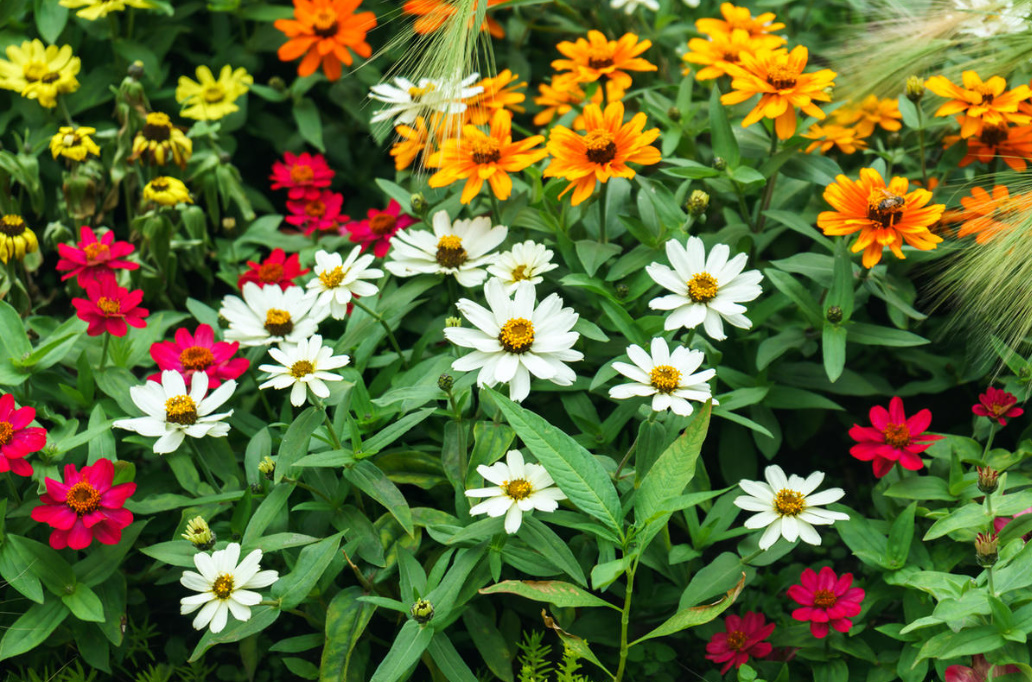
If desired, your garden can be filled with very different “daisies” of any size and flowering time. They will all be good — and each is beautiful in its own way. Do you have flowers at your dacha that look like daisies? What are your favorite ones?
